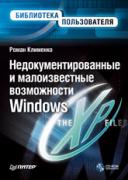Новые книги
rtrim
| ||||||||||
rtrim(PHP 3, PHP 4) rtrim - вырезает пробелы в конце строки. Описаниеstring rtrim (string str [, string charlist])
Эта функция возвращает строку str с вырезанными в конце пробелами. Без второго параметра rtrim() вырежет следующие символы:
Вы можете также специфицировать символы, которые вы хотите вырезать, с помощью параметра charlist. Просто перечислите все символы, которые вы хотите вырезать. С помощью .. вы можете специфицировать диапазон символов. | ||||||||||
| ||||||||||

